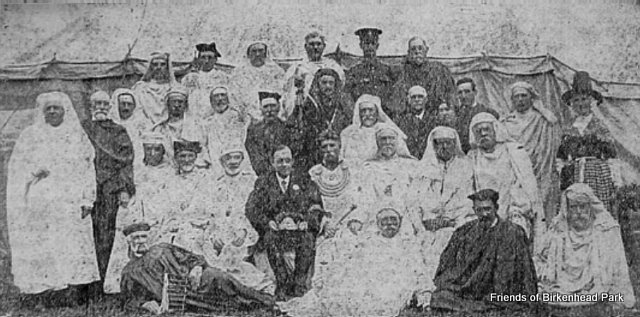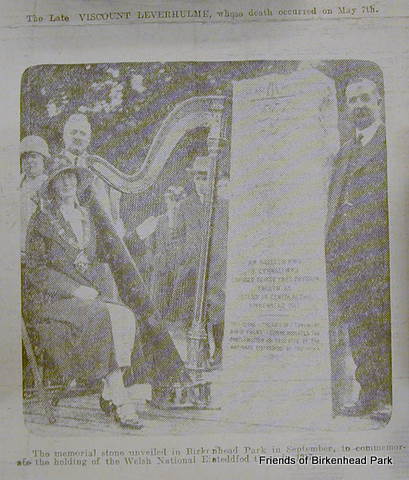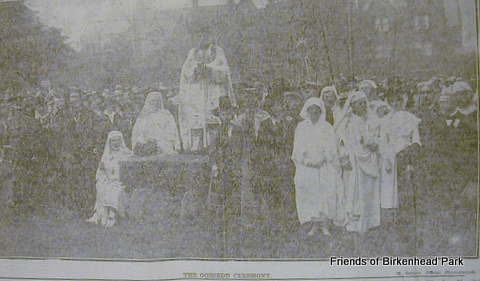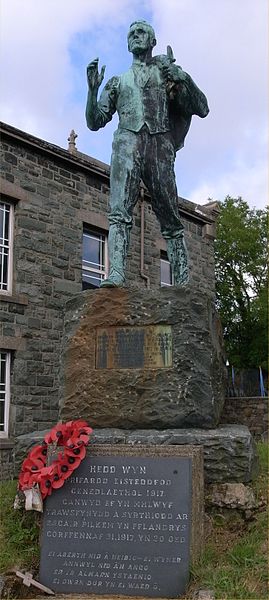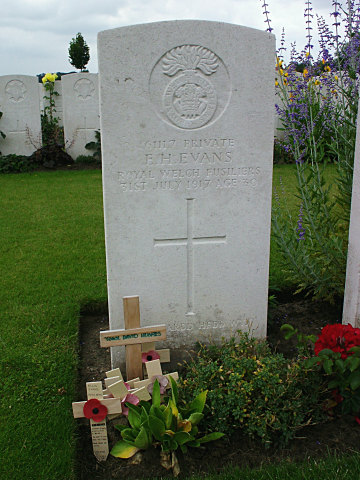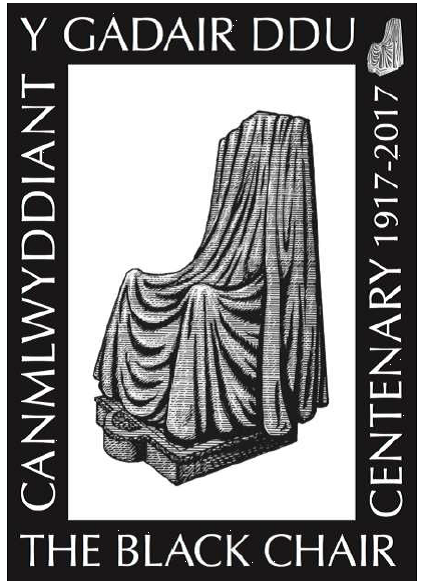National Eisteddfod of Wales 1917
The modern day National Eisteddfod of Wales is traditionally held during the first week of August and all competitions are held in the Welsh language. Large marquees, small tents and pavilions are erected to form the maes or field where visitors from all parts of the country are welcomed.
With the main literary prizes for poetry and prose being awarded under the auspices of the Gorsedd of Bards of the Island of Britain, complete with prominent figures from Welsh cultural life dressed in druidic costumes, flower dances, trumpet fanfares and a symbolic Horn of Plenty, the festival is a colourful event with plenty of activities for adults and children of all ages. The Gorsedd itself is not an ancient or pagan ceremony but rather a romantic creation by Iolo Morganwg in the 1790s and which first became part of the Eisteddfod ceremonial in 1819. The ceremonies of the Eisteddfod are taken very seriously, and an award of a crown or a chair for poetry is a great honour with the Chairing and Crowning ceremonies being the highlights of the occasion. The ceremonies are presided over by the Archdruid.
In 1917, for the third time in its history, the Eisteddfod left Wales and arrived over the border at Birkenhead where one of the most dramatic events in Eisteddfod history occurred. It was the award of the chair to the poet Ellis Humphrey Evans, bardic name Hedd Wyn, for the poem Yr Arwr (The Hero) which caused the drama. The winner was announced, the crowd waited for the poet to stand up to accept the traditional congratulations before the chairing ceremony, but no winner appeared. It was then announced that Hedd Wyn had, on 31 July, been killed in action on the fields of Flanders at Pilkem Ridge, near Ypres. He had entered the competition under the nom-de-plume 'Fleur-de-Lis'. In a moving and highly emotional ceremony, the chair was draped in black cloth and became known as the 'black chair' of Birkenhead. To many people the 'black chair' came to symbolise the empty chairs in thousands of Welsh homes which now stood vacant as a result of the war. By an ironic twist of fate, that chair had been hand crafted by Eugeen Vanfleteren, a carpenter born in Belgium, who had fled to England on the outbreak of war and had settled in Birkenhead.
Following the Eisteddfod the Black Chair was transported to Hedd Wyn’s home in Snowdonia where it can still be seen to this day. In 1992 Hedd Wyn's tragic story was the subject of an award-winning Welsh-language film.
Details of how to visit Yr Ysgwrn, Hedd Wyn’s home, can be found by following this link. Hedd Wyn was buried in Artillery Wood Cemetery and you can view documents from the Commonwealth War Graves Commission here and on Every Man Remembered here.
